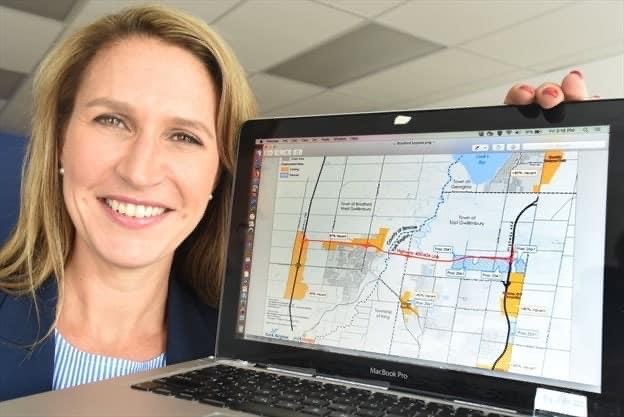On Thursday, the provincial government unveiled its budget for 2020, Ontario’s Action Plan: Protect, Support, Recover, with $45B in total support over the next three years.
For Bradford, one of the exciting parts of the government's plan includes work on the Bradford Bypass.
The government has allocated $2.6 billion in 2020-21 for the rehabilitation and expansion of highways and bridges across the province.
MPP Caroline Mulroney was happy for the residents of York-Simcoe who have been waiting a long time for the bypass work to get underway.
“When people finally see shovels in the ground they will believe it is actually going to happen,” she told BradfordToday. “I couldn’t be more happy for York-Simcoe.”
With this investment, the government is hoping to expedite construction projects, getting more people back to work as part of the province’s recovery plan. The bypass is part of the Growth Plan for the Greater Golden Horseshoe and will support economic development in Simcoe County and York Region.
“We are moving forward with engineering and environmental assessment work,” confirmed Mulroney.
The four-lane bypass will run 16.2km in lenghth, linking Highways 400 and 404, through East Gwillimbury and Bradford West Gwillimbury.
Bradford residents have been waiting years for the project to commence after it was shelved in 2003 by the Liberal government.
“It was a priority from my predecessor Julia Munro, and is a priority today,” said Mulroney about the importance of the project for the community.
The government is currently updating the 2002 EA for the re-initiation of design work on the Bradford bypass, taking into consideration aspects of the previous design to ensure the revised EA takes into account the realities of today, such as projected traffic demand and appropriate engineering design.
The project will also support both short-term and longer-term economic recovery, address capacity issues, and reduce congestion on existing local roads.
Currently, the province is advancing engineering and environmental assessment work, with construction to begin as early as fall 2021. To read more about the Bradford Bypass, check out the new project website here.
Other highlights from the plan include support for healthcare workers, families and workers.
“Protecting and supporting represent the majority of our budget,” said Mulroney about the plan.
“We know that people are struggling and our health care needs more capacity and we need to make those investments now,” she said.
The budget includes $7.5B in new funding for Ontario hospitals for sufficient PPE and money for relief and expansion.
A new Seniors Tax Credit was annouced at a cost of $30M, allowing people to renovate their homes suitable for senior living. Seniors and their families would be reimbursed 25 percent on projects costing up to $10K.
Another child tax credit of $200 per child is coming for kids under 12, and $250 per child with special needs, for a total cost of $380M. The program is to help parents with education-related expenses like school supplies and technology.
Another highlight that will help many of the rural residents in Bradford is the investment in broadband infrastructure.
According to the government website, approximately 12 per cent of households in Ontario ― mostly in rural, remote or Northern areas ― are underserved or unserved.
The 2020 budget includes funding of over $680M over the next four years for Ontario’s Up to Speed Plan. The funding includes an additional $150M to double the province’s commitment to the Improving Connectivity for Ontario (ICON) program, that supports local partnerships committed to improving connectivity in underserved and unserved communities.
The Agriculture sector will also get a boost, with $25.5 million over three years for the Agri-food Prevention and Control Innovation Program. This will help reduce disruptions in business operations and risks of COVID‑19 exposure in the workplace. It will also help with the investments in new technologies to increase productivity and efficiency in the agri-food sector.
Mulroney was also pleased to see investments being made in the skilled trades.
“We have been trying to get rid of the stigma of careers in the skills trade,” she explained. “There is tremendous opportunity in the skilled trades.”
She noted that the government has been working with guidance counsellors, schools and students to help educate them on the opportunities available.
“The demand for labour will be significant, we need to make sure to have the workers,” said Mulroney about the important need for skilled labourers in the province’s recovery process from COVID-19.
The government will be investing $17 million to increase awareness of careers in the skilled trades through the Ontario Youth Apprenticeship Program and $42 million in Specialist High Skills Major programs. This program allows students in Grades 11 and 12 to complete sector-specific courses, earn industry certifications and gain skills on the job through cooperative education placements.
The full 2020 Ontario Budget plan can be viewed here.